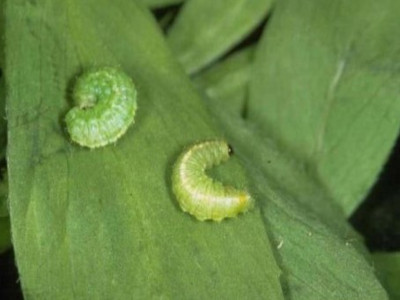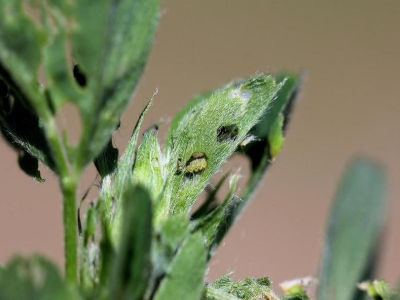By John Tooker
Recent warmth has driven populations of alfalfa weevils to be active earlier than usual.
With the recent warmth, perhaps it is not surprising that some insect pests are already becoming active. We have heard some reports that alfalfa weevil adults are active, particularly in the southern tier of counties and on warmer, south-facing slopes. Of course, eggs and larvae will follow soon enough. Young alfalfa weevil larvae cause pin hole-sized damage to leaves near the tips of plants, often on unfolded leaves (Image below).

Figure 1. Young alfalfa weevil larvae on an alfalfa leaflet.

Early season damage from alfalfa weevil.
Older larvae consume leaves that are more open, typically leaving jagged edges. Much of this early season feeding does not result in economic loss, but it is good to recognize the damage and be aware of which fields have greater activity. Those fields with larger populations will, of course, be where economically significant populations are more likely to develop, but keep in mind that most fields will not require an insecticide application and you should scout to quantify your own populations, rather than just spraying blindly. Economic thresholds for alfalfa weevil are determined from the size of plants, the value of the hay, the cost of insecticidal treatment, and the number of larvae per 30 stems of alfalfa, and are organized in a table available in our fact sheet linked below. To sample weevil larvae, systematically select 30 stems from across a field and shake them into a bucket. If the number of larvae exceeds the threshold, a treatment might be warranted. See our alfalfa weevil fact sheet for thresholds and more details on alfalfa weevil biology.
Source : psu.edu